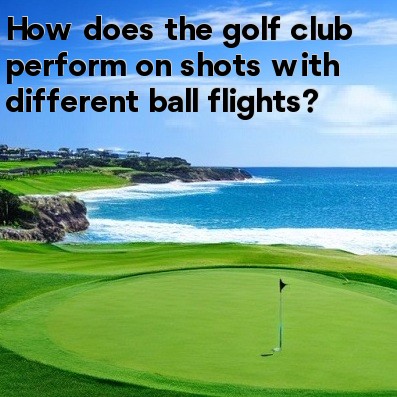
The Effects of Golf Club Performance on Different Ball Flights
When it comes to golf, understanding how different golf clubs perform on shots with various ball flights is crucial for achieving success on the course. Each golf club is designed to generate a specific ball flight trajectory, and by using the appropriate club for a particular shot, golfers can maximize distance, accuracy, and control. Let's take a closer look at how golf clubs perform on shots with different ball flights.
Driver
The driver is typically the club used for tee shots, where golfers aim to achieve maximum distance. With a low loft and longer shaft, the driver allows golfers to launch the ball high into the air with minimal spin. This combination of launch angle and low spin promotes a high ball flight, allowing the ball to carry further down the fairway. While the driver may be challenging to control, it is essential for generating distance off the tee.
Woods
Woods, including the 3-wood and 5-wood, are versatile clubs that can be used off the tee or on the fairway. With slightly higher loft than the driver, woods produce a mid-to-high trajectory that combines distance with control. The added loft helps lift the ball off the turf, making it easier to strike the ball cleanly and achieve accuracy. Golfers often rely on woods when they need distance while maintaining a reasonable level of control.
Hybrids
Hybrids are a cross between irons and woods, offering the best of both worlds. With a lower profile and greater forgiveness compared to long irons, hybrids help golfers achieve higher ball flights while still benefiting from the accuracy and control of irons. Hybrids are particularly useful in situations where golfers need to hit shots that combine distance and accuracy, such as reaching a long par 4 or par 5 in two shots.
Irons
Irons are the most versatile category of clubs, with each iron offering a slightly different loft and design. They are often used for approach shots, where golfers aim to hit the ball accurately towards the green. Different irons generate different ball flights, allowing golfers to control trajectory and distance based on the specific club used. Higher-numbered irons, like the 9-iron or pitching wedge, produce higher ball flights with more backspin, which can help the ball stop quickly on the green. Lower-numbered irons, such as the 4-iron or 5-iron, produce lower ball flights with a flatter trajectory, maximizing distance.
Wedges
Wedges, including the sand wedge and lob wedge, are designed for shots around the green and in bunkers. These clubs generate high ball flights with a significant amount of backspin, allowing golfers to control the trajectory and landing of the ball accurately. When golfers need to hit shots with precision near the pin, wedges are the go-to clubs.
Putter
The putter is the most critical club in a golfer's bag, used to roll the ball cleanly and accurately on the greens. Putters have a low loft and a flat face that skims the surface of the green, producing a minimal ball flight. The goal with a putter is to keep the ball rolling smoothly along the ground, eliminating any unnecessary vertical movement. While putters are not used for shots with varying ball flights, their role in the game cannot be overstated.
In conclusion, different golf clubs perform differently on shots with various ball flights. Golfers must understand the characteristics of each club and how they affect the trajectory and distance of their shots. By using the appropriate club for each required shot, golfers can maximize their chances of success on the course.





